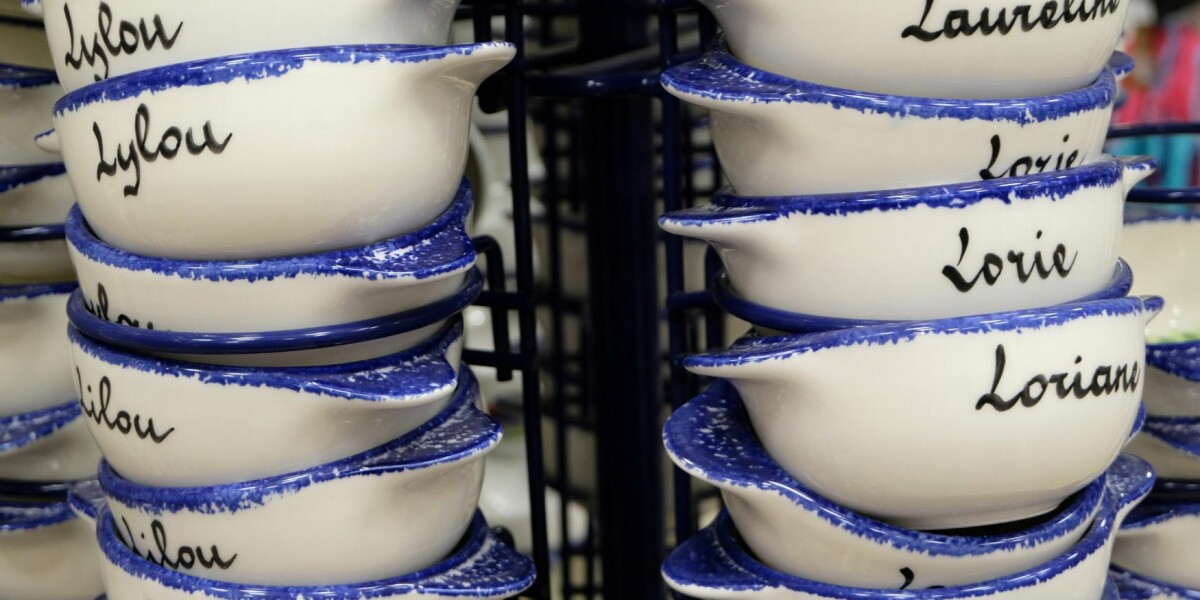
René, renée: navigating subtle gender differences in french forenames
- Select a language for the TTS:
- UK English Female
- UK English Male
- US English Female
- US English Male
- Australian Female
- Australian Male
- Language selected: (auto detect) - EN
Play all audios:

Close your eyes and listen carefully. If I mention the name ‘Valéry Giscard d’Estaing’, you will immediately know that I am talking about a former president of France. A man, of course. How
about French actor/singer Valérie Lemercier? Or Valérie André, a doctor and general in the French army?Or the writer Valery Larbaud? Are all these people men, or could one or more be a
woman? If you see these names written down, the issue is quickly resolved. Valéry is a masculine forename and Valérie its feminine equivalent. Read more: What girls’ and boys’ names are
trending for babies in France? LOOK FOR OTHER CLUES TO KNOW THE SEX OF THE PERSON They sound similar (they are near homophones) and if you hear either in conversation, you will need to look
for other clues to know which sex is being talked about – and you will have to adjust your own pronouns and adjectival agreements accordingly. Other names follow the same pattern: there is a
spelling distinction that is not audible. MALE AND FEMALE VERSIONS OF THE SAME NAME A common way to feminise is to add an extra ‘e’ at the end, as in the case of Aimé and Aimée, André and
Andrée, Benedict and Benedicte, and René and Renée. When a masculine name ends with an ‘l’, it changes gender with an extra ‘e’ or ‘le’. This shows up in pronunciation as a slightly longer
sound ending, when correctly articulated, with an ‘uh’. Examples are Ariel and Arielle, Axel and Axelle, Emmanuel and Emmanuelle, Daniel and Danielle, Armel and Armelle, Raphaël and
Raphaëlle, Joël and Joëlle, Marcel and Marcelle, Michel and Michelle, Lionel and Lionelle, Paul and Paule, and Pascal and Pascale. It happens with an ‘n’ as well: Dorian and Dorianne, and
Kilian and Kiliane, among others. It is not unusual to meet a couple with the same name in his and hers versions, although one or the other might vary their name to avoid confusion: Pascal
and Pascaline, or Michel and Micheline. Read more: Tricks to get the gender of nouns correct in French MY DAILY BLUNDERS WITH NAMES ARE PART OF MY PERSONALITY There are many other first
names that vary slightly more than this. You might have to listen hard for the difference between a Laurent and a Laurence, or Frédéric and Frédérique, because the distinction can disappear
in the mouth of an unarticulated speaker – or foreigner, like me. I often resort to an inbetween “Lorens” or “Fred” to avoid making a decision. I have tried so hard to fix the information
in my memory and my daily blunders have become part of my personality. DOUBLE-BARRELLED FIRST NAMES To complicate things further, there are people with compound male-female names: Jean-Marie
and Marie-Jean, Pierre-Marie and Marie-Pierre. I found these double-barrelled forenames difficult to remember, but that is no excuse for getting them wrong. Read more: Map: What are the
most popular baby names in your part of France? MANY NAMES ARE UNISEX Nowadays in France, as elsewhere, there is a movement against the gender-stereotyping of names. People, for many
different reasons, often assert their non-binary or non-gender identity and they do not want you to heap associations on them that they have lived with since baptism. If you meet – or
interact online with – an Alex, Ange, Camille, Charlie, Claude, Dany, Dominique, Jackie, Leslie, Lou or Sam, you have come up against a unisex name (prénom mixte) and might never know for
sure if the person you are talking to is a man or woman, or does not want to say. I have known people called Claude and Dominique of both sexes. Names, of course, go in fashions and new
parents are apt to do what they want within the rules set by the government forbidding rude, offensive or confusing names. The important point is to be sensitive to a person’s wishes – to
ascribe him or her his appropriate gender, or, if so wished, as far as it is possible in French, no gender at all.
